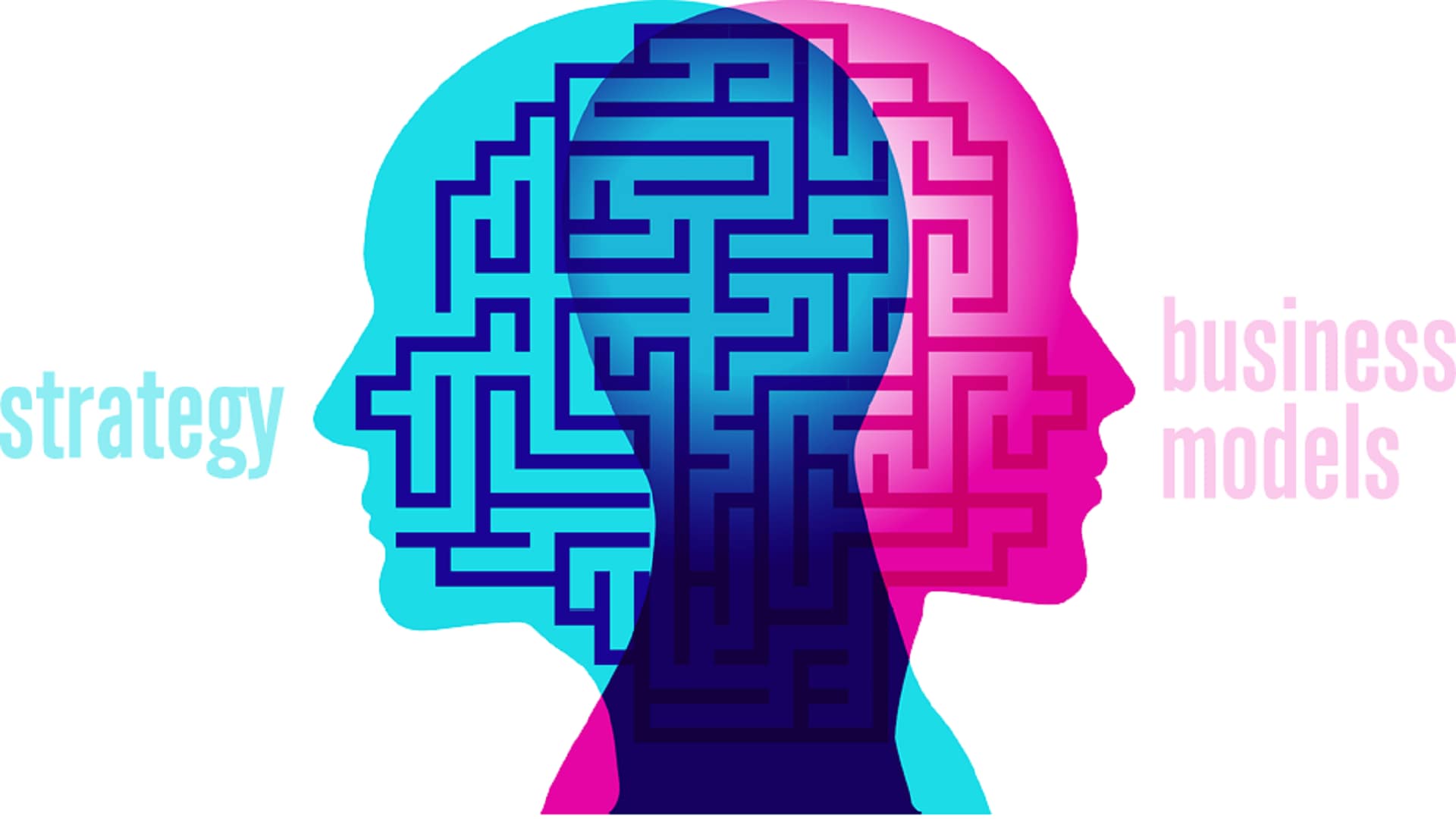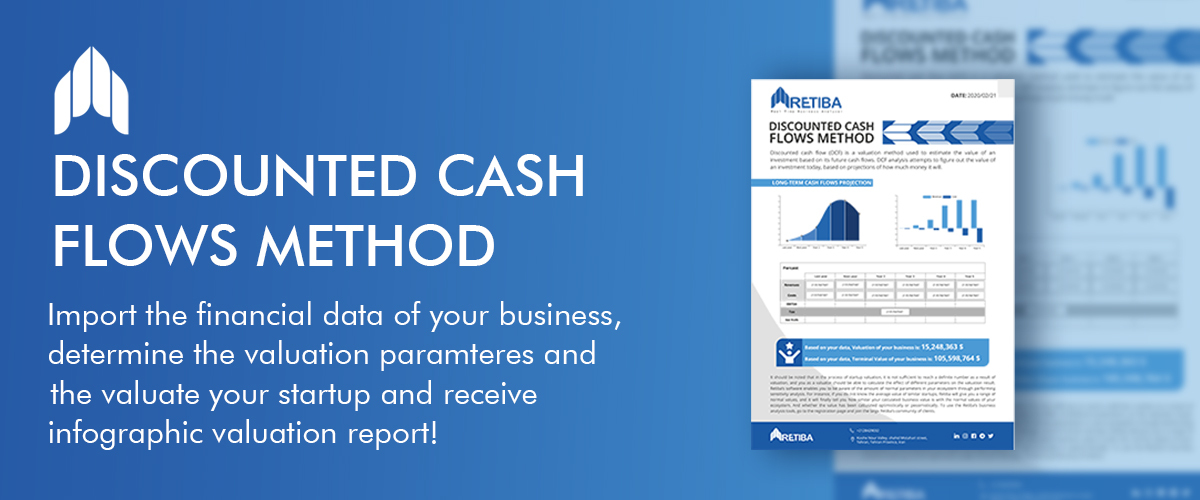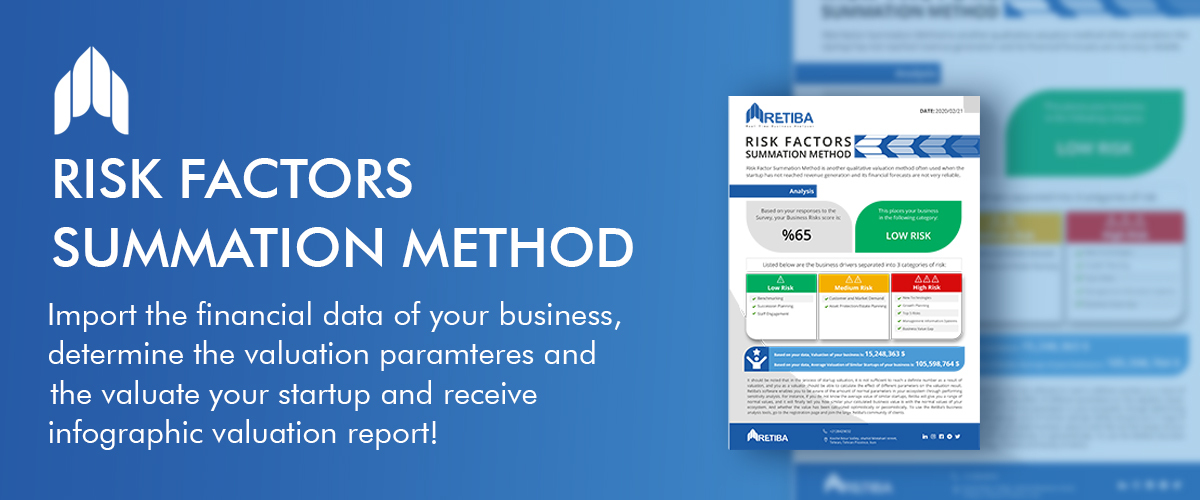Many creative entrepreneurs only focus on offering an innovative product or service to the market, but they forget that an ideal idea does not automatically turn into a successful business. A business requires a great business model just as much as it needs a good idea so that it determines that the right price for the product, the type of target customers and the channels of communication with them, and other important business components. If you have come up with a brilliant idea and you have all the features and capabilities to implement it, but you do not know where to start, the business model is what you need. it is a missing link that relates your idea to your capabilities and skills, leading to a successful business. Therefore, it can be claimed that business model analysis is a way to build an invincible startup. Stay tuned with Retiba.
Table of Contents
A general definition of business model
Establishing a business is quite similar to building a house. Is it possible to imagine a house built without preliminary plans? Creating a small business model means bringing business principles to paper. It helps you as an entrepreneur to let go of your emotions, and evaluate the potential success of your business idea realistically in the future. A good business model will help you understand a lot: What problem are you going to solve for whom? How do you create value for customers? How is your product or service going to reach the customer? How will your business stay competitive? Also, all the income and expenses will be determined.
Starting a business is very exciting, but you need the strongest potential pillar to guarantee the success of your small business. The time you spend on your business model will ensure you that there will be no shortage in the future. Now that we have told you about the benefits of a business model and provided its general definition, let’s get ready to begin discussing its exact definition and functions.
What is a business model?
It is how we plan to earn money and make a profit. It will identify the products or services that are to be sold by your business, as well as the target market and costs. It should be based on different aspects of your business such as your production, distribution, pricing, advertising and communications, and ultimately products/services that meet customer needs. All of these aspects should be anticipated.
Why do you need a business model?
Every new business that is in the development phase must have It. It is a high-level profitability plan that drives a particular business in a particular market. The first component of a business model is the value proposition. A value proposition is a history of a product or service that a company offers and explains why these goods and services are desirable to customers or applicants. The value proposition is expressed in the form of an organic idea to distinguish the desired product or service from its competitors. It should be noted that one of the most considerable functions of a business model, like any other model, is to be a kind of simulation of your business. This simulation will help you see and predict business revenue streams and costs at a glance. If the forecasts indicate a long-term outflow of revenue, it should be revised in the business model, and if the opposite is true, It will be finalized, and business processes will be reasonable accordingly.
Income forecasting is one of the most important parts of a business model:
It should also cover the specified costs of a startup and funding sources, the target customer base of the business, the marketing strategy, the market competition, and the revenue and expenditure. One of the most common mistakes in building a business model is to underestimate the true value of any business as long as it is profitable. In this case, it is not enough to calculate the cost of introducing a product to the market. A business must pursue its business as long as revenues exceed costs; therefore, it must have sufficient funding.
The costs of a business must be anticipated in the business model until the company makes a profit. It will slowly explore the incurred costs and expenses, and how much predictable income you will end up with. A successful business model should show that you will gain more revenue from customers compared to the cost of producing a product.
It can also identify opportunities for partnerships with other businesses. For example, an advertising business can benefit from referring customers to a printing company, and such opportunities must be also specified in the business_model. That is, determine whether a business is going to be profitable by partnering with other businesses or not.
Why is a business model important?
According to Joan Magretta, in her book Why Business Model Matters, the term ‘business model’ has become more widely used with the advent of personal computers and spreadsheet softwares. These tools help entrepreneurs explore, test, and transform the various ways in which they can determine the flow structure of their costs and revenues. Spreadsheet softwares, such as Microsoft Excel, helps entrepreneurs to create a set of quick hypothetical changes to their business model and immediately realize how this change will affect their business at the moment and in the future.
What are business model components?
1. Anything that a business model needs to produce a product or service: design, raw materials, production methods, labor, etc.
2. Anything needed to sell a product: marketing, distribution, product delivery, or sales services and operations.
3. Everything that the customer pays and how it is paid: pricing strategy, payment methods, payment time, down payment amount, etc.
A good business_model can modify and optimize each of these three components. You may be able to lower costs during design and production. You may be able to find more effective ways to market and sell. Or you may be able to come up with an innovative way for customers to pay.
What are the main types of business models?
We can categorize the business model in several different ways. For example, how companies and start-ups make money, or how they deal with their suppliers and customers. Some business models are always there, others are new, and some are innovative models by bringing old business models into new industries. In this article, we will explain some of the business models that are based on successful companies, technological startups, and more traditional organizations. The goal is to give you a brief overview of the different types of business models.
There is no single way to describe a business model, because some companies are able to diversify their business processes to such an extent that they provide value for several types of stakeholders (customers) in several different markets. In the following, we will take a look at the different types of business models that are commonly used by entrepreneurs in different industries.
- Business model for manufacturers or service providers
A manufacturer uses raw materials to produce products. A service provider is also a business that offers services to its customers. This model is one of the oldest business models. Manufacturers or service providers sell their products directly to end customers or they can sell their products to another business that operates as a broker.
- Distributor business model
The distributor buys the products directly from a manufacturer and resells them to retailers or the public. For example, some car showrooms buy vehicles directly from the manufacturers and sell them to the public, or a wholesaler buys products from the factory and distributes them to supermarkets.
- Retail business model
The retailer buys the product from a distributor or wholesaler and then sells the product to the public.
- Franchise business model
Instead of producing a new product, there is another method called franchising. In this model, a reputable or very well-known business grants its representation to other businesses. The word ‘franchise’ itself means paying commercial rights. For example, companies such as McDonald’s abroad or Aida fast food are among this model in the international and domestic scopes respectively.
The overall classification of business models goes far beyond these models and can be numerous of cases, all of which will not be mentioned here.
How to choose the best business model
Defining an appropriate business model requires the same effort and precision as producing a proper high-quality product, but the approach and skills needed to achieve it are different. That’s why it is often said that a startup needs two founders, one to pursue technical issues related to product and service development, and the other to follow up management issues related to developing and implementing a business model and business plan.
What is the difference between a business strategy , a business model and a business plan?
In this section, the required steps to select an appropriate business model are introduced.
- Evaluate the value of your products or services in the target market
Customers often complain that the solutions available in each market are not innovative and they want to use new products or services. If you offer an innovative product or service at a reasonable price, you can enter the market well.
A simple formula for determining the price of your key products or services is to find the lowest price for similar services or products in your market and set your product or service price range in the business model at 50 percent higher. If prices are too high, no one will welcome them, and if they are too low, people will not value your business.
- Make sure your products/services are suitable for the market
To determine the portfolio of your products/services in the business model, it is better to test it once for real customers to know their opinion. Use customer feedback to improve it. If these products and services are not widely used, no business model can be suitable for you, and you should first think about changing your products/services.
- Consult with experts and investors in similar markets
Consult with objective experts or investors in similar markets to comment on your business model. Most investors don’t have much competition with you, and if the model doesn’t really have anything to say, they reject it, but if it is a good business model, they may even be interested in implementing it.
- Run a pilot project of your business model
The ability to run a limited and experimental business is a feature of a good business model. This will allow you to estimate costs, quality and price in several stores or a small town, for example. Since the scale of the project is small, the incurred cost will be negligible in case of failure; instead, you will learn great things about business model expressions and your main capital will be spent after making modifications and completing the business model.
- Focus on your first customers
Pay special attention to your first customers and ask them to give you complete feedback and post their comments on your site or introduce you to others in exchange for special services and products. It’s not a good sign not to have their support even if you personally ask them. This indicates that, given the current conditions, your business is probably not a scalable one, and you should reconsider its scaling or change some parts of the business model.
- Check out a ready-made business model
With an advanced search on the Internet, you can find a business model similar to the one you have in mind. Most of the business models that are published on the Internet are related to reputable sites that put tested and successful models on their site so that other can benefit from them.
Using such a model will greatly reduce your efforts to write a business model and it ensures that you are on the right track. The important point is not to be tempted to use this ready-made model completely without making any changes. A ready-made model may be prepared under the conditions of a specific market or country. You need to make the necessary modifications based on your business situation, market and the country in which you are located to achieve your distinctive business model.
- Follow your competitors’ path
Take a comprehensive look at the market you want to enter. Make a list of your famous competitors in this market. Then make a ready-made pattern of the business_model we talked about in the previous section. From the list of competitors, choose one or two of the best ones, and look at the conditions of each of the business_model components that your competitors have, and complete the components of the business_model. Certainly, the competitors who are among the best in the market now, have worked in the field for several years before you entered the market have had many trials and errors.
Imitating your best competitors will ultimately make your business as a similar one to theirs even if it doesn’t reach them, and it’s definitely better to go the wrong way than to make a business_model. The use of this model is highly recommended, especially for those who do not have high management knowledge or are not very familiar with the methods of documenting the model or business plan. It is interesting to know that many successful businesses in our country, namely Iran, have been the result of a complete imitation of a foreign or domestic models that has been presented to customers in a localized Iranian form.
- Consider the main sources of the business model
What resources does your business have for routine manufacturing products or offering services, attracting new customers, or achieving its ultimate goals? Anticipate the key resources you need in your business model so that you won’t have to worry about their procurement in the future. Examples of these resources include the website, working capital, basic goods in stock, business location, list of required job positions, etc.
- The business model must be specifically designed for your business
New businesses usually write a business_model to make sure they can effectively produce products or provide services in the future. Developing a business model, if implemented well, will bring many benefits to a company or startup. Although there are ready-made and standard business_models in your field, it is recommended that you set up an exclusive business_model that exactly meets your needs.
Creating your own business_model will help you organize the scattered information you have about your business, and make it much easier to predict many other things related to them. This classification model makes it easy for you to perform various tasks at the beginning of the business and acts as a roadmap for success. Also, writing a business plan based on this model is the next step that will determine the details of the business process.
Wherever the business_model is mentioned, the first thing that comes to mind is the business_model canvas. But what is the reason for this superiority? The business canvas was first introduced by Osterwalder. A simple nine-section table that no longer requires a lot of cost. In addition, it will be ready in less time. Apart from the benefits of the business canvas, it is simple and practical compared to the business model plan. With a business canvas, you can explain your entire startup or business to anyone you want in less than ten minutes. It’s interesting, isn’t it? With a simple model, you can explain your business in a concise but comprehensive manner. The article related to the business_model canvas, examines the model, defines it and enumerates its advantages and disadvantages.
What is the difference between a business model and a business plan?
When you are ready to launch your new business, you want to build the strongest pillar for your business, which requires training and planning. You may have heard that you need to start with a business plan or business_model. Very good! But what exactly are business plans and business models and how do they differ from each other?
In a general definition, business models are assumed as a company’s pillar and business plan as a company’s structure. A business pillar or model is the primary idea of your business and a general description of how it works. The business structure or plan explains the details of your business idea. In many cases, the business_model is confused with the business plan. However, these tools have certain functions and in some cases act similarly, and in most cases are completely different.
A business model is a framework for understanding an organization’s approach, but a business plan is a document that helps to understand the organization’s future strategy and expected performance over a period of several years. A business plan is a tool that is best suited to inform outside stakeholders to understand where your business is heading and why they need to fund the business or invest in it in the future. In contrast, the business_model is a framework that helps you evaluate how your business is performing in different aspects and what kind of actions you can take at the moment.
In addition, while introducing their business to different people, both external and internal, each of these tools has a special function. The various people outside and inside the organization who interact with you in reviewing your business_model or plan are:
• External (investors and shareholders)
• Internal (owners, senior management and staff)
External business presentation: business plan or business model?
If you are looking for a tool that shows how attractive your business is, a business plan is the best tool. In addition, if you are looking to attract investors and grow your business through external resources, a detailed business plan is the most effective tool to help investors understand many parts of your business. In addition, a business plan is a tool that indicates where your business is heading off in the future.
A key component of a business plan is a set of three-to-five-year projects. Investors also want to know what kind of business_model you want to build. Also keep in mind that the interest of investors will increase or decrease depending on whether your business_model is scalable or not.
The first tool that shows what your business will look like in the future, and explains the details of the types of resources your business needs to reach its position in the future, is the business plan. In short, no effective tool is better than a business plan so that influential people outside the organization know more about your business and invest in it.
Internal business presentation: business plan or business model?
None of the tools that help your company identify key employees and executives are more effective than the business_model. In addition, the business_model is a general framework that is easier to understand (usually in briefly stated in one page only) and helps you understand how your business is improving in different ways. Depending on what kind of business you are trying to establish or where you want to move your organization toward, you can take a look at the following tools:
• Business_model canvas
• Innovation canvas in the business_model
• The value proposition canvas
• Lean startup canvas
Each of these tools will help you build a different type of business. For example, in the establishment stage, the business_model canvas, and lean startup canvas are the most suitable tools. In the incremental stage, the pure startup canvas is more appropriate than the business_model canvas. Canvases will be your best tools in such analyses. As a result, if you are looking for a way to better understand your business right now and want to know how to design the basics of a business to help you grow, a business_model is more appropriate than a business plan.










2 Comments. Leave new
I really found this useful. Thank you.
Thank you! I really appreciate the time you’ve taken to read and comment